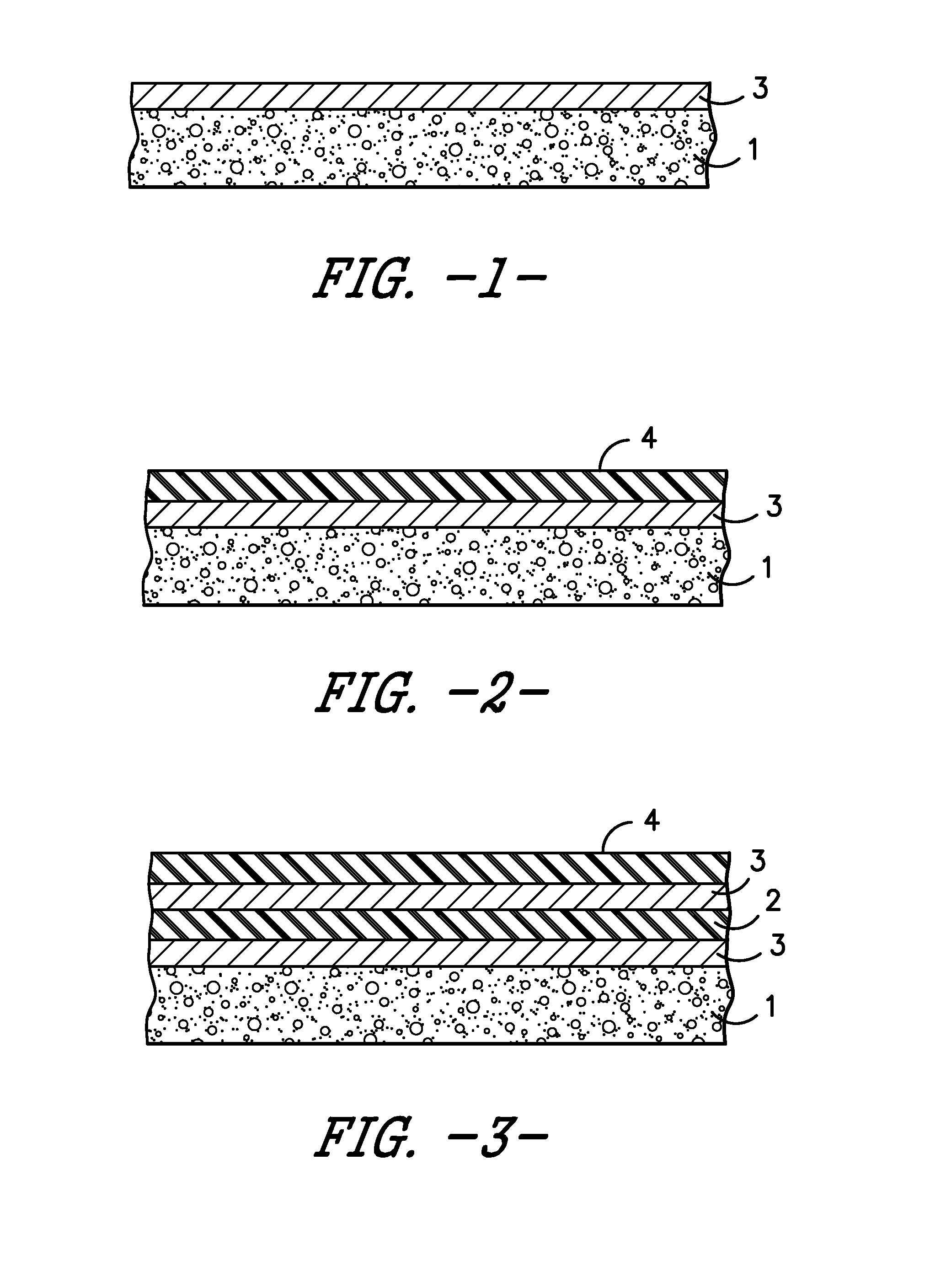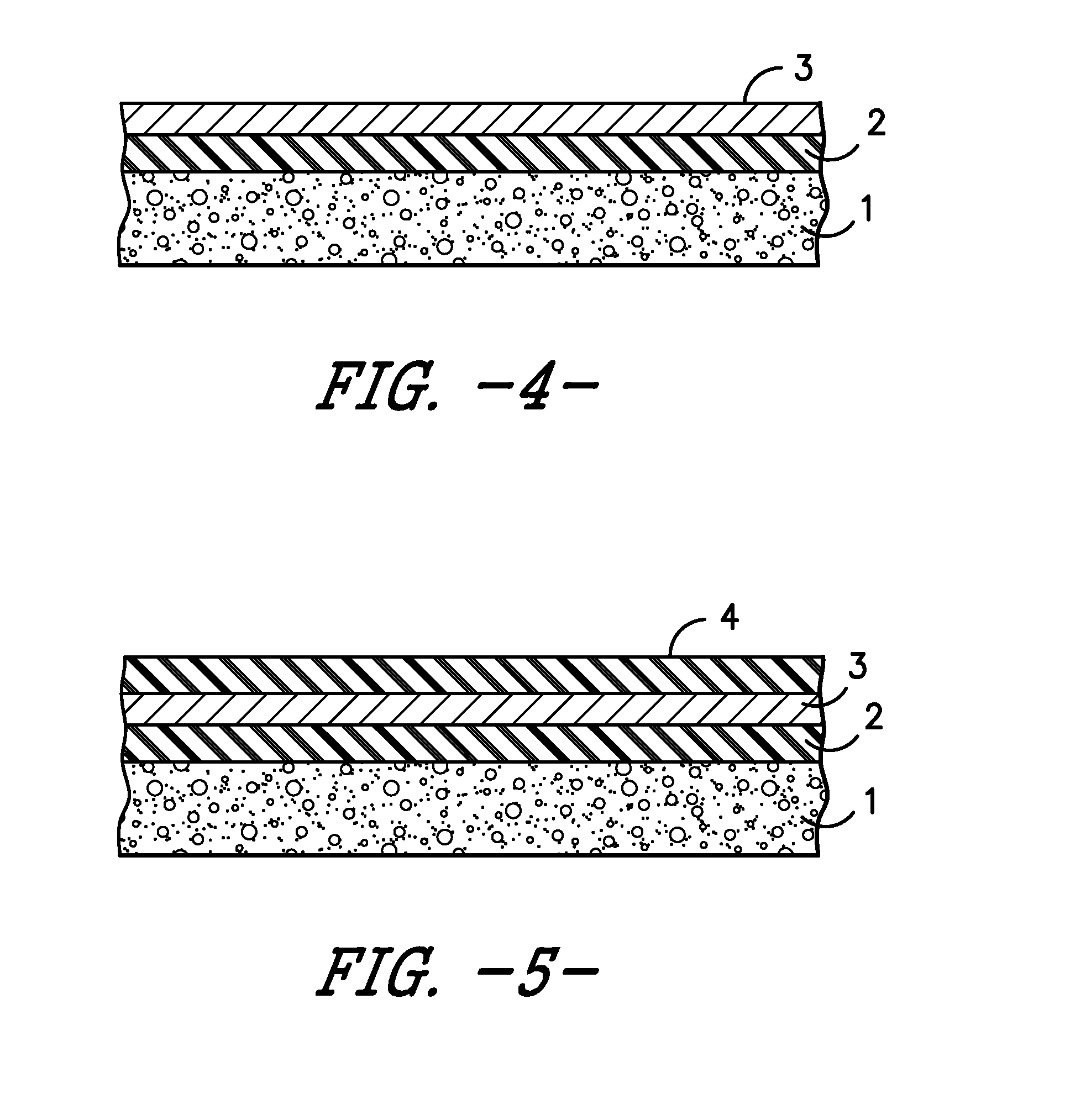Removable, Plastic Foam Insulation for Architectural Glass
a technology of plastic foam and architectural glass, which is applied in the field of removable plastic foam insulation for architectural glass, can solve the problems of foam appearing, adhesive separation from inert foam, residue on glass,
- Summary
- Abstract
- Description
- Claims
- Application Information
AI Technical Summary
Benefits of technology
Problems solved by technology
Method used
Image
Examples
example one
[0027]A mobile home near Montgomery, Ala. (USA) with high window condensation was fitted with approximately 60% glass window coverage on single glaze windows. The adhesive was a ½ inch (12.7 mm) wide double sided acrylic tape placed around the periphery of the foam, and the polyethylene foam was ¼ inch (6.35 mm) thick. The retail price of the invention was $150. The annual electricity savings was $409. Wintertime propane savings was $350. The annual return on the investment was 500%. Furthermore, the invention is estimated to last three years before condensation damage. The overall return on the 3 year investment is estimated at $2277. This 3 year savings exceeds 15 times the initial investment. However, reapplication of new adhesive is possible. Additionally, more moisture resistant adhesives are now known. Therefore, this example should be considered illustrative, but not limiting.
example two
[0028]An approximately 2500 square foot (233 sq. m) home with double pane windows in Prattville, Ala. (USA) was fitted with 45% coverage in a low condensation environment for a retail cost of $200. The glass removable adhesive on the laminated film was a full application of acrylic material which is rated to remain useable for ten years, and the polyethylene foam was ¼ inch (6.35 mm) thick. The yearly electricity savings was $548. The yearly propane savings calculated was $300. The annual return was 4.2 times the initial outlay. The ten year return on the investment is an estimated $8480. This ten year savings exceeds 42 times the initial investment not including energy inflation.
[0029]Finally, this invention could save many lives lost in home fires due to the desperate use of space heaters in cold extremes. It will also relieve the stress on electrical heaters reducing fires from their overuse. Undoubtedly, a thirty to sixty percent reduction of the heating load in a domicile will ...
PUM
| Property | Measurement | Unit |
|---|---|---|
| Fraction | aaaaa | aaaaa |
| Transmission | aaaaa | aaaaa |
| Adhesivity | aaaaa | aaaaa |
Abstract
Description
Claims
Application Information
 Login to View More
Login to View More - R&D
- Intellectual Property
- Life Sciences
- Materials
- Tech Scout
- Unparalleled Data Quality
- Higher Quality Content
- 60% Fewer Hallucinations
Browse by: Latest US Patents, China's latest patents, Technical Efficacy Thesaurus, Application Domain, Technology Topic, Popular Technical Reports.
© 2025 PatSnap. All rights reserved.Legal|Privacy policy|Modern Slavery Act Transparency Statement|Sitemap|About US| Contact US: help@patsnap.com



